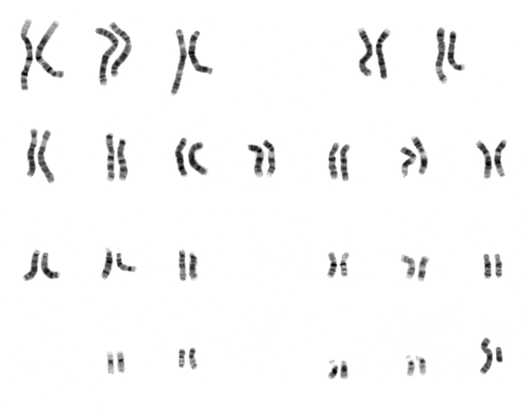The chromosome is a condensation of chromatin that appears in advance of and during cell division. Proteins hold DNA together, which is tightly packed and coiled into successively more complex structures.
Prokaryotes and Archaea typically only have a single circular chromosome, whereas eukaryotes typically have a number of linear chromosomes. The classical X-shaped structures seen in complex eukaryotes are actually the result of a linear chromosome and a matching duplicate chromosome that have been folded together into a single structure so that each daughter cell can easily receive one copy. See the figure below for a human karyotype, or representation of all 46 chromosomes from a human cell.

Human cells, like many eukaryotes, are diploid, meaning that each of their 23 chromosomes appears in duplicate, with slight modifications; chromosomes belonging to a pair are called homologous. Many other organisms (and human gametes) are haploid (having one copy of each chromosome) or polyploid (having multiple copies of each chromosome). Each phenomenon has different ramifications for how traits will eventually be manifested in the organism; in diploid species like humans, many traits will be encoded by two alleles, which appear in corresponding DNA locations on matching chromosomes from a pair.
Chromosomes were observed as long, stringy structures by Walther Flemming during his pioneering experiments into chromatin in the 1880s. Another blockbuster experiment in chromosome research was performed by Theodor Boveri during the same period when he linked chromosomes to heredity by demonstrating that removing chromosomes from sea urchin embryos halted their development.